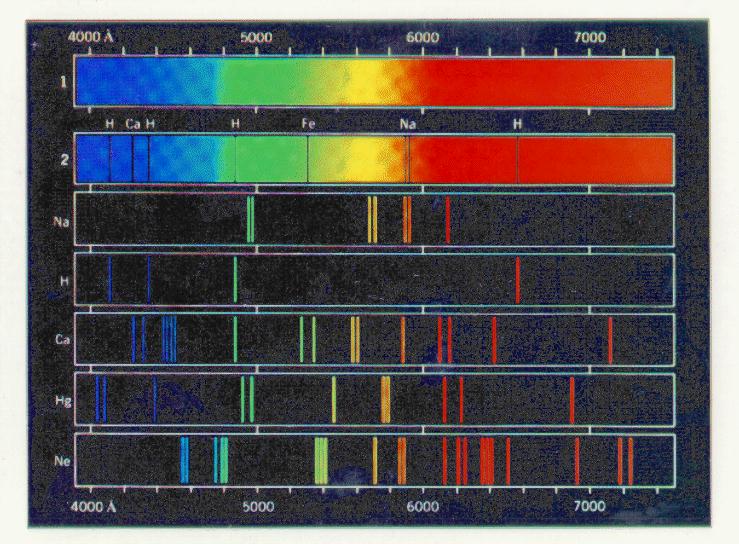

If you shine the light from a star through a prism (or similar device), you notice that the light is actually composed of a blend of many colors (the colors of the rainbow). This smoothly varying part of the spectrum is known as the continuum. In normal stars, there are colors (energies, wavelengths) where the emission is small and so appear dark. These are known as absorption lines. The lines are produced by atoms which selectively absorb the light. In AGNs, one sees strong emission lines. Emission lines are, in a sense, the inverse of the absorption lines. These are due to atoms producing light at particular energies (wavlengths). The energies (wavelengths) of the lines produced are unique to the type of atom. For example,
 |
An interesting effect arises if the source (or receiver) is in motion.

This effect is known as the Doppler Effect. The change in the relative wavelength is determined by the speed of approach or recession,
The redshift z is roughly the speed of approach or recession.